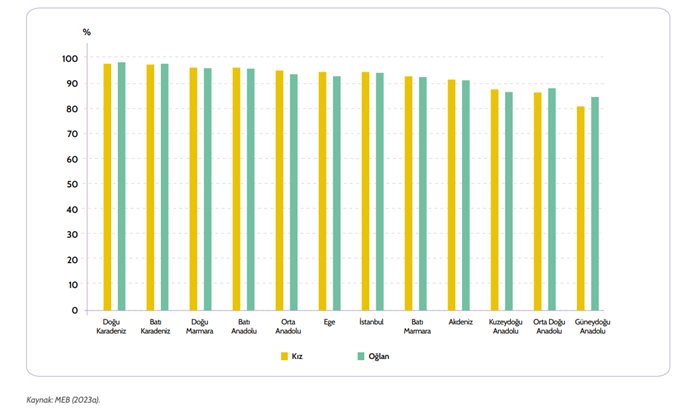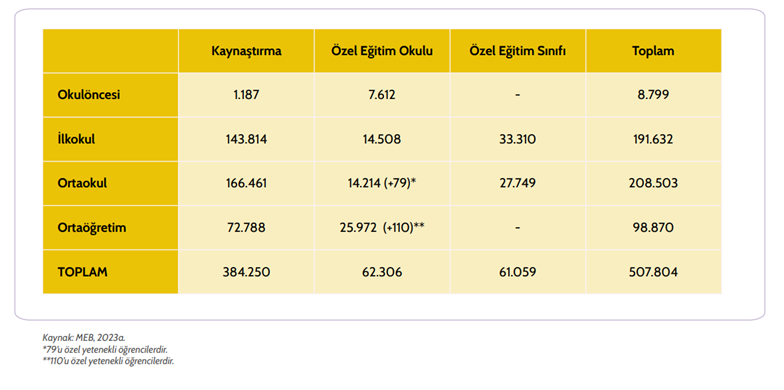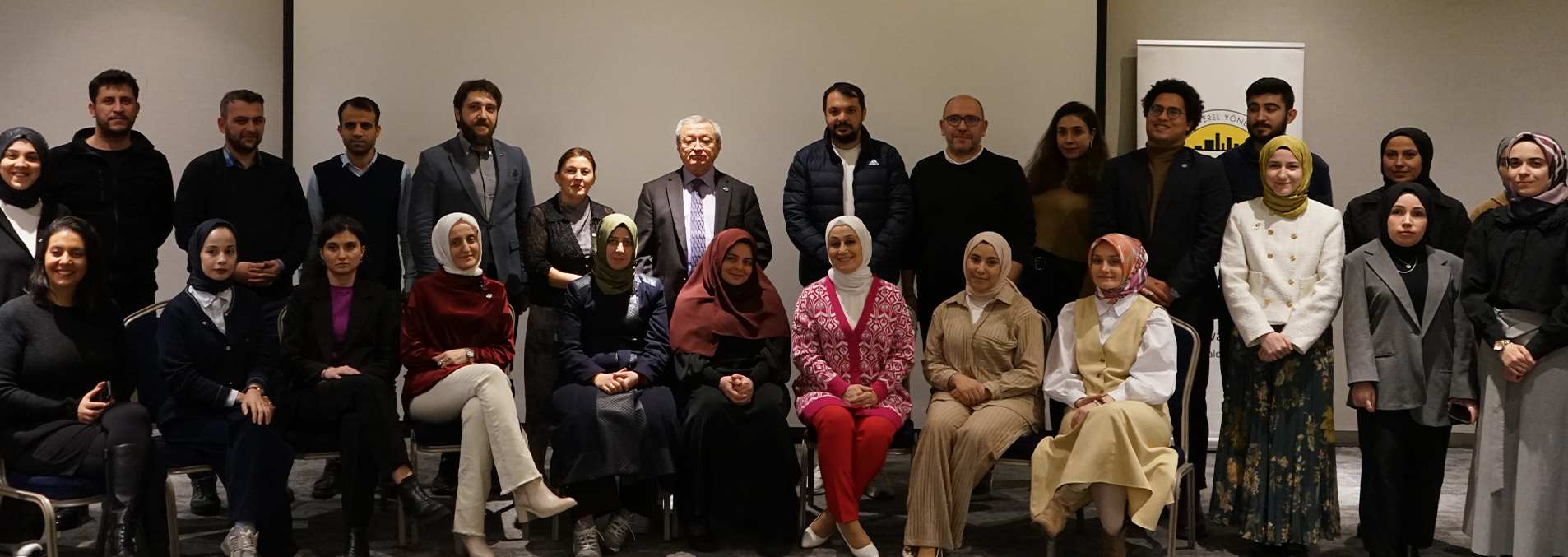Education Monitoring Report Draws Attention to Schooling of Disadvantaged Groups
Improving the quality of education across all segments of society is a pivotal developmental goal for countries and a fundamental aspect of the United Nations (UN) Sustainable Development Goals (SDGs). According to the UN, education stands as a key enabler for achieving numerous goals. The approach that countries take toward education and the inclusion of all segments of society in receiving quality education can be comprehended through periodic reports. In Türkiye, recent reports shed light on various challenges and obstacles while also showcasing the progress that has been achieved.
In this context, the Education Monitoring Report (EIR) for 2023, published by the Ministry of National Education (MEB), garnered attention by specifically addressing the schooling of disadvantaged groups. The report focuses on girls, children in need of special education support, rural children, refugee children, and working children under the title "Children in Need of Special Measures for Access to Education.
“Although indicators on access to education define two separate groups of children, those who are in education and those who are not, more information on these children is needed in order to take the right steps towards ensuring access to quality education," the report states, underlining that monitoring studies conducted since 2007 have revealed that the above-mentioned groups of children are more disadvantaged than others in terms of access to education.
According to the report, over the last 30 years, efforts to improve girls' access to education have borne fruit.
The report states that although the gender ratio is not a direct indicator of access to education, it is used to monitor whether there is a gender balance among children who have access to education and that the gender ratio should be close to 100% in education: “In Türkiye, the gender ratio increased from 89.6% in primary education in 2000-01 to 99.5% and 101.9% in middle school in 2022-23. In secondary education, it increased from 74.4% to 96.0%."
The net enrollment rate for girls in secondary school increased from 69.3% in 2012-13 to 91.6% in 2022-23.
Chart 1: Net Enrollment Rates in Secondary Education by Gender and Regions, 2022-23

Nevertheless, it is noted that this rate exhibits regional variations. The report underscores a significant discrepancy, stating, "There is a 16.4 percentage point difference between the Eastern Black Sea Region (97.3%), where the net enrollment rate of girls in secondary education is the highest, and Southeastern Anatolia (80.9%), where this rate is the lowest." Additionally, the report notes that "Southeastern Anatolia is the region with the highest net enrollment rate gap in favor of boys, at 3.6 percentage points."
The report also sheds light on another dimension of girls' education: the enrollment rate by age. According to the findings, approximately 221,739 girls of compulsory education age were out of school during the 2022-23 academic year.
Looking at the change in this number by age, it is observed that the number of girls who drop out of education exceeds 20,000 at the age of 14 and 30,000 at the age of 15-16. At the age of 17, the number of girls who drop out of education exceeds 50,000. This rapid increase after the age of 14 shows that intervention programs are needed to keep girls in education, especially at this age. Although the total number of children out of education is close to each other for girls and boys (approximately 221,739 for girls and 220,904 for boys), the reasons for girls' and boys' dropping out of education differ," the report said, adding that this situation reveals that "solutions to the problems of girls should be produced with a girl-focused design based on gender equality."
In Türkiye, only data on children with disabilities in formal education is regularly available, and data on the number of all children with disabilities, and therefore on enrollment rates in special education, are not shared with the public.
According to the report, "Statistics for the 2022-23 academic year show that the number of students benefiting from special education services in formal education increased by 35,118 compared to the previous year to 507,804."
Table 1: Number of Students Benefiting from Special Education Services in Formal Education, 2022-23

Another disadvantaged group in education comprises rural children. The report highlighted that the overall number of students in rural areas increased by 2.4% to 623,902 in the 2022-23 academic year, a change attributed to the Feb. 6 earthquakes affecting 11 provinces in southeastern Türkiye and parts of Syria.
"The earthquakes resulted in a rise in the rural population and concurrently diversified the needs of these areas. As assessed by the Village Schools Change Network, rural areas have transformed into settlements attracting migration due to their provision of relatively safe environments, proximity to nature, and ease in meeting heating and nutrition requirements. This increase has consequently led to a greater number of students benefiting from educational activities in villages."
In addition to Syrians, who constitute the largest refugee group in Türkiye, various communities such as Afghans, Iranians, Iraqis, Ukrainians, and Russians are also residing here. However, assessing access to education across different groups poses a challenge, as schooling rates for children without Turkish citizenship are not disaggregated.
According to the report dated March 7, 2023, by the Department of Migration and Education in Emergencies of the Ministry of National Education's General Directorate of Lifelong Learning, the number of "foreign national" children between the ages of 5-17 living in Türkiye is 1 million 448 thousand 638. Out of these children, 993,336 are enrolled in school, and the schooling rate increased by 0.1 percentage points to 68.6% compared to the 2021-22 data.
Another disadvantaged group comprises working children. Globally, almost one in 10 children is employed in activities that may fall under the scope of child labor. The report notes that the decline in child labor rates, which had been occurring for 20 years worldwide, reversed with the COVID-19 outbreak. It states, "Since 2019, there has been an 88% increase in child labor in the U.S. The reasons for this increase include economic factors such as businesses closing due to the pandemic, increasing demand for labor, especially in low-wage service sector jobs, and rising inflation."
In Türkiye, there is only current data on the employment status of children aged 15-17.
According to this data, "the employment rate in the 15-17 age group, which declined to 13.7% during the pandemic, increased after the pandemic, reaching 14.0% in 2021 and 16.4% in 2022. In terms of gender, the employment rate of boys in the 15-17 age group in 2022 is 23.7%, while the employment rate of girls is 8.6%."
Considering the headings and data mentioned in the report, it is evident that Türkiye has made progress in the inclusion of disadvantaged groups in education. However, it is also emphasized that this progress varies by region and has been adversely impacted in numerous ways by disasters such as the COVID-19 pandemic or earthquakes.















